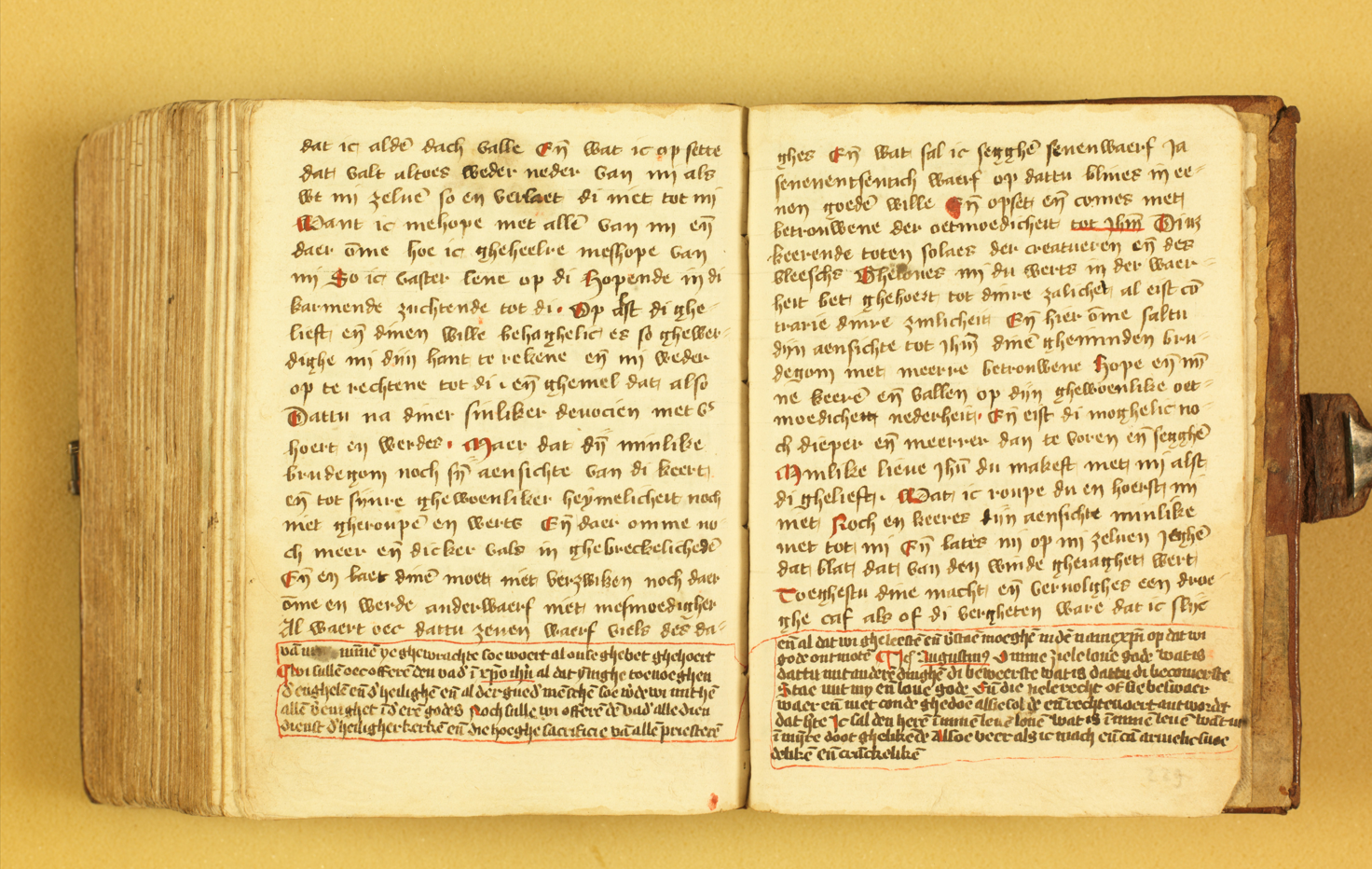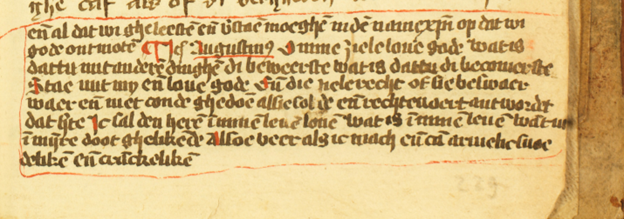Mysticism in the margin
Mysticism in the margin
‘The spiritual wedding’ (‘De geestelijke bruiloft’) of mystic Jan van Ruusbroec (c. 1293-1381) was a popular read in the Low Countries. A reader of a manuscript from the first half of the 15th apparently liked it a lot. This person added quotations and excerpts from ‘The spiritual wedding’ to two mystical tracts, which are now in a devotional book containing mainly mystical texts by the Brothers and Sisters of the Common Life (Deventer, Athenaeumbliotheek, 101 E 7 KL).

Deventer, Athenaeumbibliotheek, 101 E 7 KL, fols. 228v-229r
Remarkably, the quotations from Jan van Ruusbroec are not written after the last text, but added in bits and pieces in the lower margins of the main text. The added passages from ‘The spiritual wedding’ are framed in red on each page, to clearly distinguish them from the main text. The manuscript is like a modern flip book (a tête-bêche), where a story can be started at the front and back. Indeed, the red-framed passages continue in the margins of the following pages, and can be read independently of the main text. But perhaps the intention was to read the texts in parallel, rather than separately. In the eyes of this reader, the quotations from Jan van Ruusbroec’s ‘Spiritual Wedding’ may have complemented the mystical texts under which they were written.
One would think there must have been a deeper reason for writing the passages in the lower margins, other than lack of space. For this section is preceded by four blank pages, ruled and all, where these excerpts could easily have been written down.

Deventer, Athenaeumbibliotheek, 101 E 7 KL, fols. 219v-220r
In devotional books we often find blank pages, usually at the end of the book, where readers could add quotations they had read elsewhere and wanted to remember. So why didn’t this reader write the quotations from Ruusbroec’s Spiritual Wedding in the designated space? There may be a simple explanation: the last section of the manuscript, with Ruusbroec’s quotations in the margin, was probably written elsewhere and added to the devotional book at a later stage. The last two texts are written in West Flemish dialect. Presumably, the quire was sent from Flanders to the sisters in Diepenveen, where it was bound together with the devotional book, to which it fitted well in terms of content.

Deventer, Athenaeumbibliotheek, 101 E 7 KL, fol. 229r, bottom margin
The reader who added the passages slightly adjusted the layout of the text. Whereas Ruusbroec’s mystical texts have an auditory design, that is, are structured in such a way that they can be read aloud, these transcribed passages are visually designed as a scholarly text, suited for silent reading and studying. We find red section marks (capitula or pillcrows) that divide the text into smaller units of meaning, and here and there words and names are underlined, which makes it easier to find relevant sections.
The book binding reveals another special find. On the inside of the back cover is a fourteenth-century fragment of the ‘Rijmbijbel’ of Jacob van Maerlant (c. 1230- c. 1300). Apparently, when this devotional book was bound at the monastery in Diepenveen in the fifteenth century, a manuscript of the famous Rijmbijbel was at hand in the workshop. Today every fragment of the Rijmbijbel is treasured, but it seems this copy was not considered worth preserving at the time, and was cut up as binding material. The passages from Ruusbroec’s Spiritual Wedding, on the other hand, have been well-preserved in this codex, in spite of their precarious position in the lower margins of the book.

Deventer, Athenaeumbibliotheek, 101 E 7 KL, binnenzijde achterplat met losgeraakt dekblad





